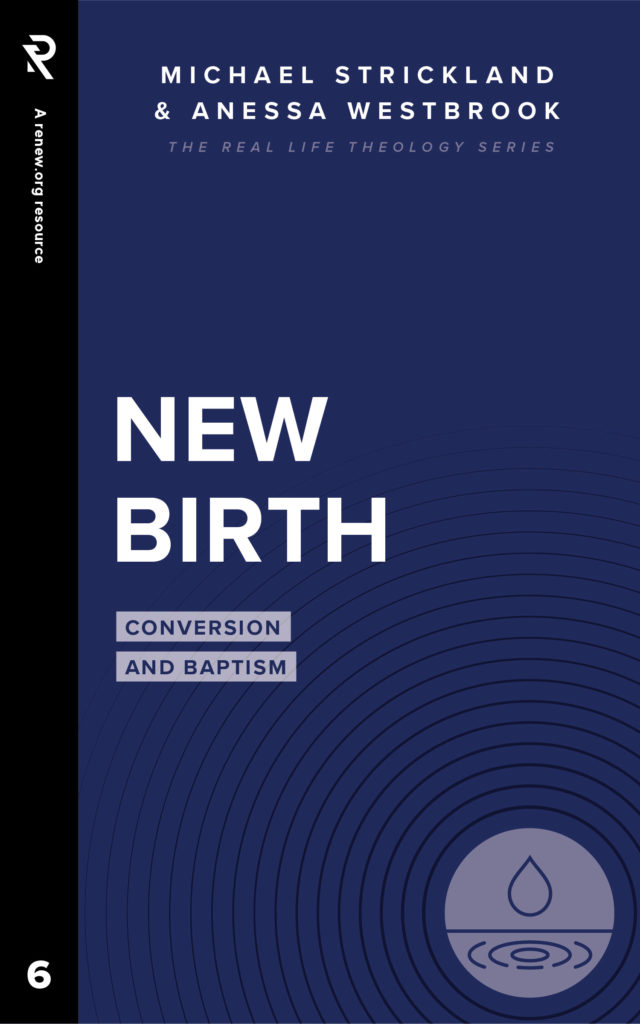
The Role of Mentoring and Discipleship in a Women’s Ministry
So, what Is mentoring?
The word “mentor” originally came from the name of a friend of King Odysseus in Homer’s Odyssey. Mentor was entrusted with Telemachus, the king’s only son, while the king was off at war. Mentor showed wisdom, care, and commitment, which are all essential ingredients of a good mentor by today’s standards as well.[1]
We mentor people when we walk in relationship with them and help them toward greater maturity. Jesus mentored people into the most important type of maturity: becoming more like him. Since becoming like Jesus and joining his mission involve being his students, or disciples, we call this process “discipleship.”
Jesus discipled people by using a multi-layered, relational system. At the core were the twelve apostles and, within that, the three disciples with whom he was closest: Peter, James, and John. Although Jesus was busy ministering to many, he also brought along these chosen few. He poured himself into preparing them for the ministry that lay before them. This relational discipling had a lasting effect with the establishment of the church, one which can still be seen today.
When we talk about mentoring in a church setting (and more specifically, discipling them toward Christlikeness), we have in mind their spiritual development. This type of mentoring is relational, representing the Word incarnate. It is grounded in the ordinary, practical, and at times autobiographical. It is a partnership with the Holy Spirit, requiring listening and adaptable discernment. The work of spiritual mentoring represents the role of the priesthood of all believers.[2]
“This type of mentoring is relational, representing the Word incarnate.”
The relationship between mentor and mentee is not just a person-to-person relationship; rather God is in the middle. It is only when God remains in the middle that relationships will be balanced, neither defensive nor seeking to gain control over another.[3]
Scriptural Basis of Mentoring
Titus 2:4-5 is often thought of as the Scriptural basis for women’s ministry, as it lays out clear instructions for mentoring the next generation of women. In it, older women are commanded to mentor younger women on righteous living and caring for their families. This basis alone is enough to warrant women mentoring women.
In addition, the Great Commission in Matthew 28:19-20 commands us to make disciples of Jesus. This does not just emphasize the conversion process but calls us to walk alongside one another in long-term, mentoring relationships. Mentors can learn to share when they see God at work, and mentees can gain eyes to see how God works.
God emphasized telling about what he has done to the next generation through regular reminders. For example, in Joshua 4, after God stopped up the Jordan River to allow Israel to pass through into the promised land, he had one person from each tribe go back and get a stone from the middle of the river bed. Why did God have Joshua do this? He actually had the children in mind (Joshua 4:21). He wanted them to tell the story of what he had done for Israel. The message would be that the Lord is powerful and that they should always fear him.
“He wanted them to tell the story of what he had done for Israel.”
Through mentoring we have a chance to do as described in Psalms 78:2-4 (NIV):
“I will open my mouth with a parable;
I will utter hidden things, things from of old—
things we have heard and known,
things our ancestors have told us.
We will not hide them from their descendants;
we will tell the next generation
the praiseworthy deeds of the Lord,
his power, and the wonders he has done.”
With God’s concern for teaching the next generation and the clear command in Titus 2, mentoring emerges as a natural starting place to begin a women’s ministry.
Benefits of Mentoring
The benefits of mentoring have been widely noted in business, education, and church settings. James M. Houston offers an ecological framework to explain its effectiveness. A tree planted in the clearing of an old forest has a better chance of growth than one that has been planted alone in a field. Young trees can actually root more successfully when they follow pathways made by older trees. In a similar way, people are able to develop better when they follow paths taken by those who are a little further ahead in their development. Mentees can develop beyond what they would have been able to on their own.[4]
In a church setting, mentoring takes on a certain telos (goal) different from other settings. The goal of mentoring here is to awaken another to the presence of God in her life, to see how God is working, and to strengthen her personal walk with God. Mentoring can help develop leaders that are able to discern the best possible ways to meet these challenges. Mentees receive assistance to help them learn to listen, analyze, discern, and reflect both critically and theologically upon their environment. This is a valuable contribution to their personal and spiritual development.[5]
“The goal of mentoring here is to awaken another to the presence of God in her life, to see how God is working, and to strengthen her personal walk with God.”
When a woman is able to meet with a competent mentor, it develops her self-awareness and enhances her ability to critically self-reflect.[6] Anderson and Reese reflect that “Christian faith is an imitative faith,” suggesting that Christian spirituality can be summarized in the phrase “follow me.”[7]
Mentors also experience benefits via increased personal satisfaction and fulfillment, increased creativity and synergy, career and personal rejuvenation, development of a support group, increased professional recognition, and the experience of pleasure associated with helping future generations.[8] As mentors work with the people in a church setting, they are fully engaged in their own theological and ministerial reflection. This energizes and renews mentors personally as well as mentees.[9]
Aspects of Mentoring
It is easy to speak about mentoring without ever really considering the different components of it. Anderson and Reese offer several continua to consider when planning a mentoring program: formal or informal, structured or unstructured, hierarchal or mutual, and accidental or planned.[10]
When part of a women’s ministry structure, certain styles of mentoring will be more common than others. Mentoring ministries tend to be generally structured, planned, and often formal. However, it is also possible to match people up and then just let them decide how to proceed, creating informal relationships.
Hierarchal ministries are common, consisting of an older and younger woman paired up together. The term “hierarchal” doesn’t necessarily refer to authority in this case but just that one person is a step or two ahead in development. From this definition, you could also pair up someone who has more experience in a particular area with someone who has less.
“You could also pair up someone who has more experience in a particular area with someone who has less.”
For a mentoring ministry to occur that is informal and unstructured, a strong culture of mentoring would have to be developed. This could be incredibly effective, but would require consistent messaging.
Types of Mentoring Relationships
Robert Clinton offers nine types of mentoring relationships: discipler, spiritual guide, coach, counselor, teacher, sponsor, contemporary model (personal model), historical model (from former leaders), and divine contact.[11] Of these, only the first three are considered active, regular mentoring relationships. As Clinton defines it, discipleship differs from other types of mentoring because it focuses on the basic tenants of faith. (In general, Renew.org offers a broader view of disciple making, e.g., as entering into relationships to help people trust and follow Jesus, be changed by Jesus, and join his mission.) A spiritual guide focuses on helping someone develop or improve their spiritual life by suggesting and guiding them through spiritual practices. The image of coach, counselor, and teacher are probably the most familiar.
A sponsor helps the mentee make connections to provide information and development in different areas. The contemporary model and historical model are more like role models, with even the living (contemporary) person not being one that is actively involved in the mentees’ life. A divine contact is someone who enters into someone’s life at just the right time to help them, more like a divine appointment, who serves as a piece of their bigger picture of development.
Knowing these models can be important as you are considering how to design your program. Mentors have strengths that may be better accessed with a particular type or style. If you have a chance to do training, make sure that your mentors are aware of these options.
“The role of the mentor is to make their experiences accessible to the mentee.”
It is also important to emphasize that the role of the mentor is to make their experiences accessible to the mentee. Their conversations should be one of give-and-take, not merely information dumping onto the mentee without regard for her needs or concerns. In the past, some approaches have emphasized the role of the mentor and her knowledge without enough consideration for the needs of the mentee. When approaching a mentoring relationship, it may be helpful to think of it as mentee-centered rather than mentor-centered. When we approach it this way, it encourages growth.
Mentees also have different needs, which may call for different approaches. Take for example, someone who is still young in her faith. Using Clinton’s terminology, a structured approach with a discipler that systematically takes her through the basic tenants of faith would be appropriate. Or perhaps she has the basic knowledge necessary, but does not have a good routine of personal spiritual practices. A structured approach with a spiritual guide may be the most helpful for her.
Peer Mentoring
There are also some valuable benefits of mutual, or peer, mentoring. Groups who gather together to discover and try out spiritual practices, keep one another on track with their Bible reading, or accountable in their spiritual walk become spiritual friends. This friendship is valuable because, when there is a question, concern, or struggle, it is natural to have a spiritual conversation with the women in this group.
Although mentoring is typically pictured as a relationship between an older person and a younger person, the idea of group mentoring needs to be considered. For example, discipling people to understand basic Christian teachings is well attested as taking place in a group.
It’s helpful to understand that the word mathētēs (Greek noun for “disciple”) occurs 239 times in plural form in the Gospels and Acts. Of these occurrences, it is used only 20 times in the singular form to refer to “the disciple that Jesus loves” or to a hypothetical disciple, and only 5 times in the sense of a single disciple. The concept of discipleship was almost exclusively a plural concept in the first-century church.
“The concept of discipleship was almost exclusively a plural concept in the first-century church.”
There are certainly some practical benefits providing mentoring in groups as well. First, group mentoring can allow mentors who are already stretched thin to share the burden of preparation, provide opportunities for the group to hear different voices, and also provide a fun synergy within the group. Second, Harvard Assessment Seminars found that students reported their most positive learning did not occur in one-on-one relationships but with a teacher and a small group of students.[12] This finding is useful in a setting where mentors are in short supply, and anecdotally from students and mentors I have heard that it can also make conversations easier and more comfortable.
While considering the concept of group mentoring, some practical advice about organizing such a program emerged:
- Small groups should consist of no more than six people.[13]
- If larger groups are needed, after an initial introductory time together they can break into small groups with multiple facilitators.[14]
- Ideally, spiritual direction groups should meet twice a month for two hours, since it takes more than an hour for everyone to share deeply. Organizers should be aware, though, that this may be too much for a mentor, especially if they have more than one group. In this case, perhaps certain people can be assigned to share at different meeting times.[15]
- Meeting too frequently discourages deep sharing.[16]
“After an initial introductory time together they can break into small groups with multiple facilitators.”
Although both individual and group mentoring have their advantages and disadvantages, both are useful to consider when designing a mentoring ministry at church. I do not believe that there is a one-size-fits-all solution to mentoring. Often there is a successful mentoring ministry in one location that gets promoted, which may or may not work as well in another setting. Even among churches in the same city, one methodology may work better in one location than another. The individual needs of the women and the church’s resources need to be taken into account when considering which method to use.
Beginning a Mentoring Ministry
When we are considering starting a new program it is important to prayerfully think through the options, make plans, and recruit the right people. However, the most important thing is to be faithful to the teaching in Titus 2 and actually mentor people. Sometimes we can become paralyzed with worry about if our plans are good enough then wait too long to implement them.
No mentoring plan will be perfect. Think of beginning a mentoring program as testing the waters. Just do your best to plan and begin; then be observant and honest with how things are going, making changes as needed. Think of it more as an experiment and take the pressure off to start with the perfect plan—which is impossible. When we engage in mentoring, we are investing in the future of each woman involved, both mentor and mentee, as well as the future of our churches.
[1] Ron Lee Davis, Mentoring: The Strategy of the Master (Nashville: Thomas Nelson Publishers, 1991), 15.
[2] Keith R. Anderson and Randy D. Reese, Spiritual Mentoring: A Guide for Seeking and Giving Direction (Downers Grove, IL: InterVarsity Press, 1999), 37-55.
[3] Brian A. Williams, The Potter’s Rib: Mentoring for Pastoral Formation (Vancouver, British Columbia: Regent College Publishing, 2005), 153.
[4] James M. Houston, The Mentored Life: From Individualism to Personhood (Colorado Springs, CO: NavPress, 2002), 10.
[5] Tony Horsfall, Mentoring for Spiritual Growth: Sharing the Journey of Faith (Abingdon, England: The Bible Reading Fellowship, 2008), 103-104.
[6] Lynn Rhodes, “Mentoring for Leadership,” in Equipping the Saints: Best Practices in Contextual Theological Education, eds. David O. Jenkins and P. Alice Rogers (Cleveland, OH: Pilgrim Press, 2010), 99.
[7] Anderson and Reese, 15.
[8] W. Brad Johnson and Charles R. Ridley, The Elements of Mentoring, Revised Edition (New York: Palgrave MacMillan, 2004), xi-xii.
[9] Rhodes, 103.
[10] Anderson and Reese, 36.
[11] Paul D. Stanley and J. Robert Clinton, Connecting: The Mentoring Relationships You Need to Succeed in Life (Colorado Springs, CO: NavPress, 1992), 42.
[12] Sharon Daloz Parks, Big Questions, Worthy Dreams: Mentoring Young Adults in Their Search for Meaning, Purpose and Faith (San Francisco, CA: Jossey-Bass, 2000), 127.
[13] Horsfall, 109.
[14] Ibid.
[15] David G. Benner, Sacred Companions: The Gift of Spiritual Friendship & Direction (Downers Grove, IL: InterVarsity Press, 2002), 176.
[16] Ibid.







